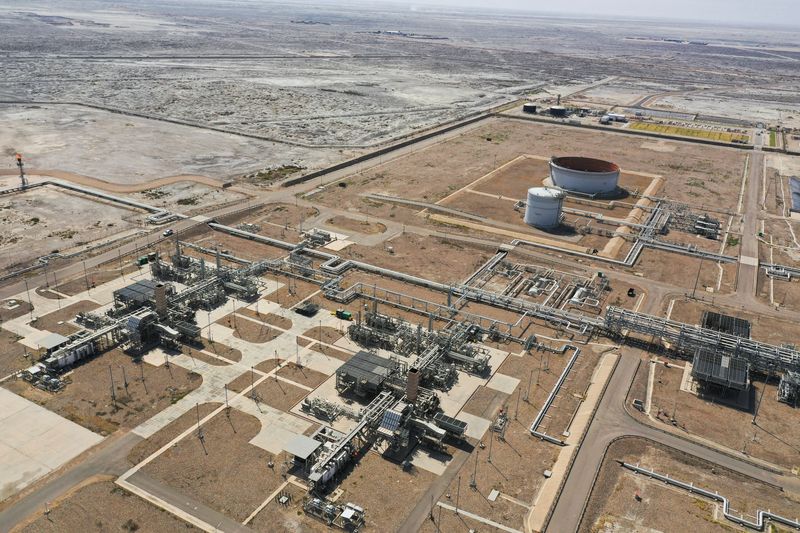Commodities
Oil slips as concern eases about Middle East supply risk

By Alex Lawler
LONDON (Reuters) -Oil slipped for a second day on Tuesday as easing concern about supply risks and a rapidly escalating conflict after Iran’s weekend attack on Israel offset data showing China’s economy grew faster than expected in the first quarter.
Also weighing was stronger-than-expected U.S. retail sales for March that further reinforced expectations the U.S. Federal Reserve is unlikely to rush to cut interest rates, a scenario that dampens the prospects for oil demand.
futures for June delivery fell 52 cents, or 0.6%, to $89.58 a barrel by 1218 GMT. for May slipped 55 cents, or 0.6%, to $84.86.
“The balancing act between sticky inflation, a hesitant Fed and the gradual move towards a full-blown regional conflict keeps oil…in its range,” said Tamas Varga of oil broker PVM.
“Material disruption to oil production, supply or shipping must take place to approach the $100 a barrel milestone. Currently such a development appears implausible.”
Concern that Iran would respond to the strike on its embassy compound in Damascus helped send Brent on Friday to $92.18, the highest since October.
Prices, though, fell on Monday after Iran’s attack on Israel proved to be less damaging than anticipated, easing concerns of a quickly intensifying conflict that could disrupt supply.
“As the risk to supply is waning and a military response from Israel looks less likely as more time passes, prices are holding steady,” said Rystad Energy’s Jorge León. “Tensions are high, and either party’s next moves are hard to predict.”

Iran will respond to any action against its interests, President Ebrahim Raisi said on Tuesday, according to the Iranian Student News Agency, a day after Israel warned it will respond to Tehran’s weekend drone and missile attack.
Iran produces more than 3 million barrels per day of crude oil as a major producer within the Organization of the Petroleum Exporting Countries (OPEC).
Commodities
Oil prices rise; U.S. crude inventories plunge, Russia-Ukraine truce eyed
Commodities
India’s Reliance to stop buying Venezuelan oil over US tariffs, sources say
Commodities
Oil prices climb on Venezuela supply worries

 Forex3 years ago
Forex3 years agoForex Today: the dollar is gaining strength amid gloomy sentiment at the start of the Fed’s week

 Forex3 years ago
Forex3 years agoUnbiased review of Pocket Option broker

 Forex3 years ago
Forex3 years agoDollar to pound sterling exchange rate today: Pound plummeted to its lowest since 1985

 Forex3 years ago
Forex3 years agoHow is the Australian dollar doing today?

 Cryptocurrency3 years ago
Cryptocurrency3 years agoWhat happened in the crypto market – current events today

 World3 years ago
World3 years agoWhy are modern video games an art form?

 Commodities3 years ago
Commodities3 years agoCopper continues to fall in price on expectations of lower demand in China

 Economy3 years ago
Economy3 years agoCrude oil tankers double in price due to EU anti-Russian sanctions























